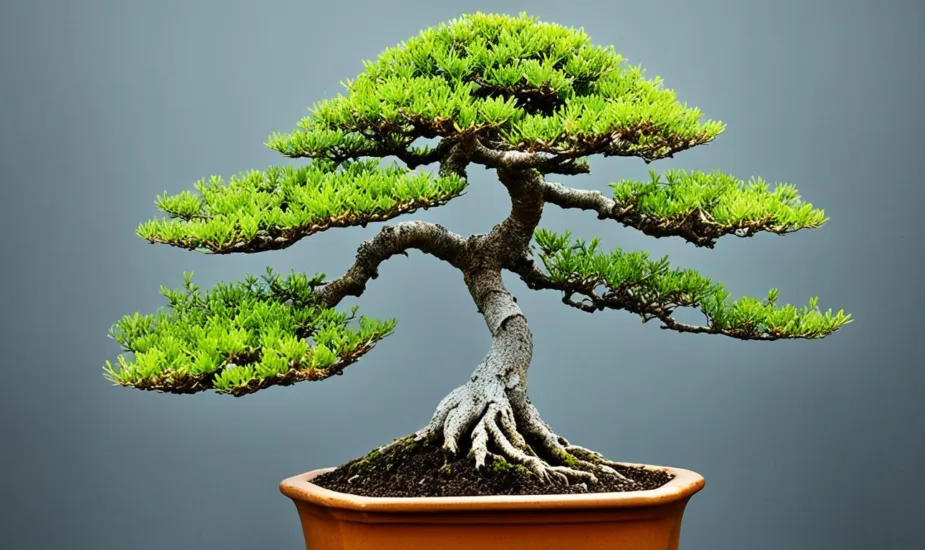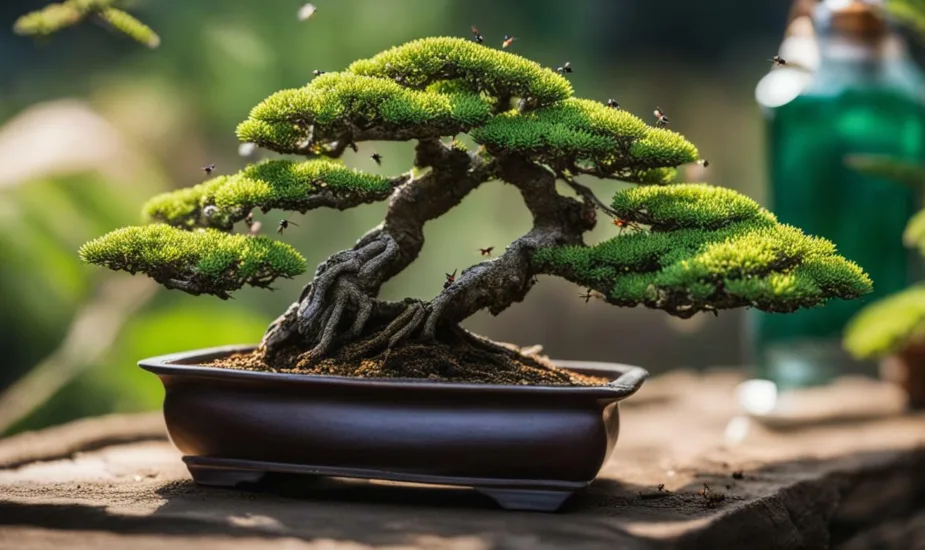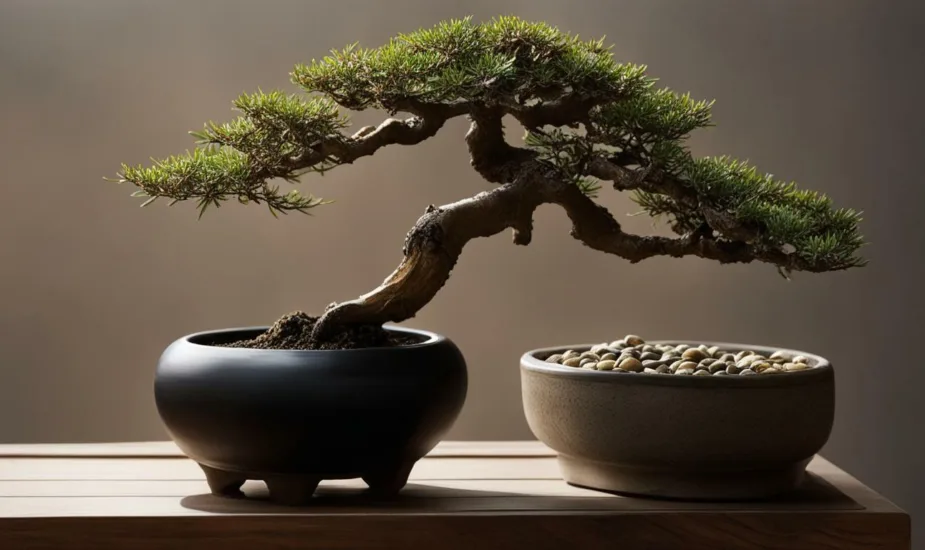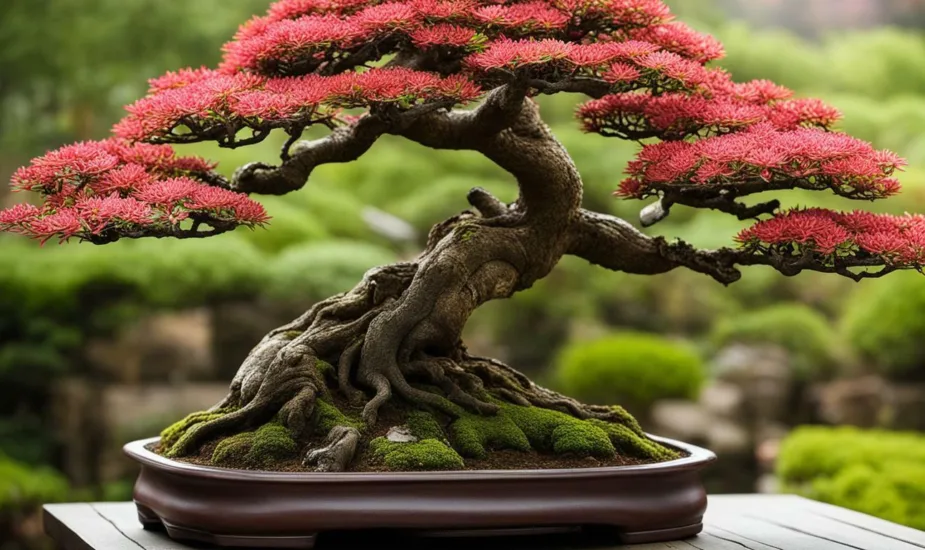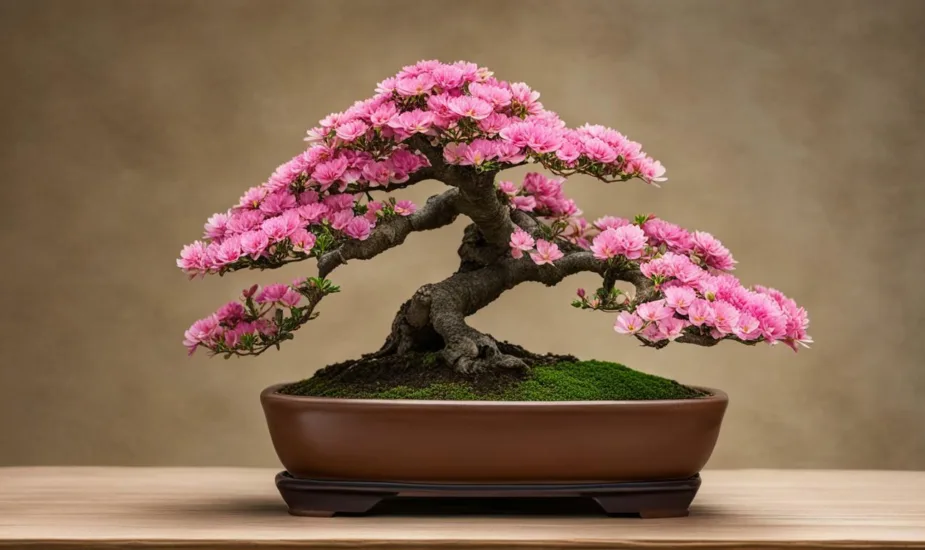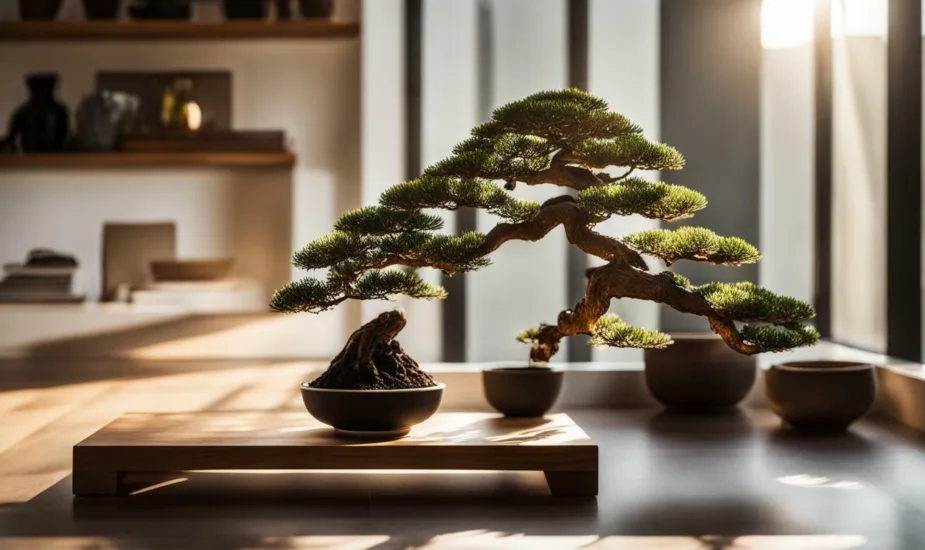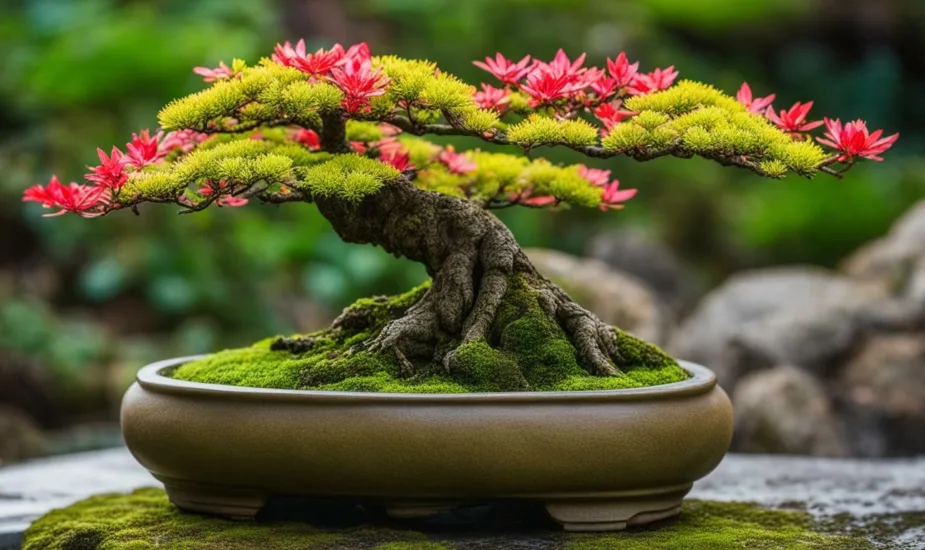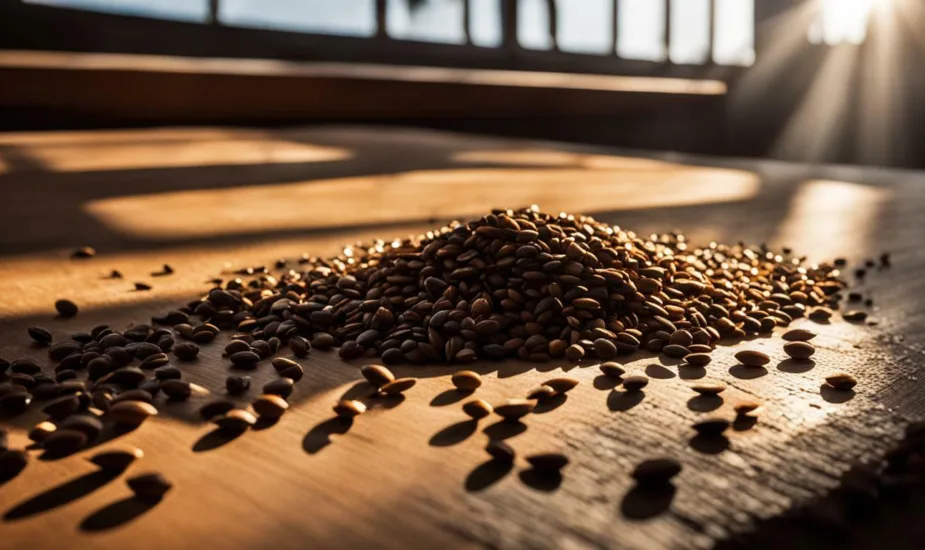Do Bonsai Trees Grow Small Fruit? Explore the Miniature Wonders.
Bonsai trees have long fascinated enthusiasts with their miniature form, but do they also bear small fruit?

In this section, I will delve into the captivating world of bonsai trees and uncover whether they have the ability to produce small fruit. We will also touch upon the essential aspects of caring for bonsai trees, including proper pruning techniques and overall bonsai tree care.
- Bonsai trees can indeed grow small fruit, despite their tiny stature.
- Mini bonsai trees can bear full-sized fruit because they originate from the same seeds as regular trees.
- The fruit produced on bonsai trees often reaches the same size found in grocery stores.
- Many types of fruit trees can be cultivated as bonsai trees, including apples, lemons, quinces, olives, pomegranates, blueberries, cherries, and more.
- However, the amount of fruit harvested from a bonsai tree is limited due to its small size.
The Potential for Tiny Harvests: Fruit-Bearing Bonsai Trees
Although bonsai trees are known for their diminutive size, they have the surprising ability to bear actual fruit, offering a unique and captivating experience for bonsai growers. These miniaturized fruit trees, also known as fruit-bearing bonsai trees, bring the beauty and elegance of fruit production to a whole new level. Despite their small stature, these bonsai trees originate from the same seeds as regular fruit trees, allowing them to produce full-sized fruit. While the leaves of a bonsai tree shrink to appear miniature, the fruit often remains large.
There are numerous bonsai tree varieties that can be cultivated to bear fruit, providing a wide range of options for bonsai enthusiasts. From miniaturized versions of apples and lemons to quinces, olives, pomegranates, blueberries, cherries, and more, the possibilities are truly endless. These fruit tree bonsai require special care and cultivation techniques to promote fruiting. While the amount of fruit harvested from a bonsai tree is limited due to its small size, the process of nurturing and caring for these miniature trees adds a unique and rewarding dimension to the art of bonsai cultivation.
When caring for a fruit tree bonsai, it is essential to follow proper pruning, feeding, and shaping techniques. Regular maintenance ensures the health and vitality of the bonsai tree, allowing it to thrive and produce fruit. Choosing a suitable bonsai tree variety that is known for its fruit-bearing capabilities is also crucial. With the right care and attention, bonsai enthusiasts can enjoy the beauty of miniature trees adorned with full-sized fruit, creating a captivating display that showcases the artistry and skill of bonsai cultivation.
| Fruit Trees Suitable for Bonsai Cultivation | Description |
|---|---|
| Apples | A miniature version of the popular fruit, producing small apples that resemble their full-sized counterparts. |
| Lemons | Small lemon trees that bear tiny, aromatic fruits, adding a refreshing touch to any bonsai collection. |
| Quinces | A unique fruit tree that produces small quinces, known for their distinct fragrance and exotic appeal. |
| Olives | Miniature olive trees that yield small olives, perfect for adding a Mediterranean touch to bonsai arrangements. |
| Pomegranates | Compact pomegranate trees that display vibrant blooms and produce small, decorative fruits. |
| Blueberries | Delicate blueberry bushes that bear tiny fruits, adding a splash of color and sweetness to bonsai displays. |
| Cherries | Tiny cherry trees that produce small, edible cherries, often used as a symbol of fortune and prosperity. |
In conclusion, the potential for tiny harvests on fruit-bearing bonsai trees is a fascinating aspect of bonsai cultivation. While the limited size of these miniature trees restricts the quantity of fruit they can bear, the process of nurturing and caring for them is a rewarding experience for bonsai enthusiasts. By choosing suitable bonsai tree varieties and providing proper care, bonsai growers can witness the beauty of full-sized fruit growing on these small yet captivating trees. The artistry and skill involved in cultivating fruit tree bonsai add a unique dimension to the world of bonsai, making it an art form that continues to captivate and inspire.
Care and Cultivation of Fruit Tree Bonsai
Caring for fruit tree bonsai requires attention to detail and specific techniques to ensure their well-being and encourage fruit production. Proper pruning, feeding, and shaping are essential aspects of maintaining the health and vitality of these miniature fruit trees.
When it comes to pruning, bonsai trees require regular maintenance to keep their size in check and promote optimal growth. This involves removing any dead or damaged branches, as well as trimming back new growth to maintain the desired shape and size of the tree. Pruning also helps to increase sunlight penetration and air circulation, which are crucial for fruit production.
Feeding is another critical aspect of caring for fruit tree bonsai. These miniaturized trees have limited root systems, so it’s important to provide them with a balanced fertilizer specifically formulated for bonsai trees. This will ensure they receive the necessary nutrients to support healthy growth and fruit production.

Shaping is an integral part of cultivating fruit tree bonsai. Through careful wiring and training techniques, the branches and trunk can be shaped to mimic the appearance of full-sized fruit trees. This not only enhances the aesthetic appeal of the bonsai but also promotes the development of a sturdy and balanced structure, which is essential for supporting the weight of the fruit.
Choosing the Right Bonsai Tree Variety
When selecting a tree variety for fruit production, it’s important to choose a species that is well-suited for bonsai cultivation. Certain fruit tree varieties are more suitable for bonsai than others, as they adapt well to the constraints of being grown in a small container. Apple, lemon, quince, olive, pomegranate, blueberry, and cherry trees are popular choices for fruit-bearing bonsai trees.
| Fruit Tree Variety | Characteristics |
|---|---|
| Apple | Produces small apples that retain the flavor and appearance of full-sized counterparts. |
| Lemon | Yields miniature lemons that add a refreshing touch to any bonsai collection. |
| Quince | Produces tiny quinces that can be used for cooking, baking, or ornamental purposes. |
| Olive | Produces small olives that are perfect for garnishing dishes or creating olive oil. |
| Pomegranate | Yields miniature pomegranates that are as vibrant and delicious as their larger counterparts. |
| Blueberry | Produces small berries that are bursting with flavor and packed with antioxidants. |
| Cherry | Produces tiny cherries that are a delightful sight and taste. |
Overall, caring for fruit tree bonsai is an art form that requires patience, expertise, and a deep appreciation for the beauty of nature. While the fruit harvest may be limited due to the small size of bonsai trees, the experience of nurturing these miniature wonders and witnessing their fruit production is truly rewarding.
Conclusion
While bonsai trees may not yield abundant fruit, their ability to produce small fruit showcases the artistry and wonder of these miniature creations. Bonsai trees, despite their small size, have the remarkable capability to bear full-sized fruit. This is because they originate from the same seeds as regular trees, resulting in fruit that often reaches the same size found in grocery stores, such as full-sized apples, lemons, and quinces.
Many types of fruit trees can be cultivated as bonsai trees, including apples, lemons, quinces, olives, pomegranates, blueberries, cherries, and more. However, due to their limited space for growth, the amount of fruit harvested from a bonsai tree is restricted. It is crucial to understand that bonsai trees are primarily intended as an art form, rather than productive fruit producers.
Caring for a fruit tree bonsai is similar to caring for a regular bonsai. Proper pruning, feeding, and shaping are essential to maintain its health and vitality. Choosing a suitable species of tree that is capable of producing fruit is also important in ensuring successful bonsai cultivation. Although growing fruit on bonsai trees can be challenging, it can also be a highly rewarding experience for enthusiasts who appreciate the beauty and intricacy of these miniature wonders.
FAQ
Can bonsai trees grow small fruit?
Yes, bonsai trees can indeed grow small fruit. They originate from the same seeds as regular trees and can bear full-sized fruit, such as apples, lemons, and quinces.
What types of fruit trees can be cultivated as bonsai trees?
Many types of fruit trees can be cultivated as bonsai, including apples, lemons, quinces, olives, pomegranates, blueberries, cherries, and more.
How much fruit can be harvested from a bonsai tree?
The amount of fruit harvested from a bonsai tree is limited due to its small size. Bonsai trees are intended as an art form rather than productive fruit producers.
How do you care for a fruit tree bonsai?
Caring for a fruit tree bonsai is similar to caring for a regular bonsai. Proper pruning, feeding, and shaping are essential to promote fruit production. It is important to choose a suitable species and provide the necessary care.
Are fruit tree bonsai a challenging and rewarding experience?
Yes, growing fruit on bonsai trees can be a challenging but rewarding experience. It requires attention to detail and proper care, but the miniature fruit produced adds a unique charm to the bonsai tree.
 Little Garden Tips
Little Garden Tips




